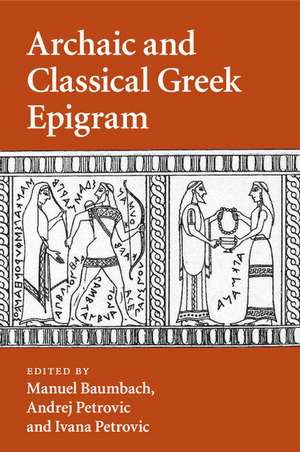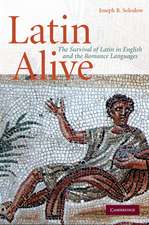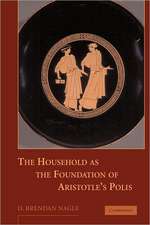Archaic and Classical Greek Epigram
Editat de Manuel Baumbach, Andrej Petrovic, Ivana Petrovicen Limba Engleză Paperback – 14 sep 2016
| Toate formatele și edițiile | Preț | Express |
|---|---|---|
| Paperback (1) | 356.91 lei 6-8 săpt. | |
| Cambridge University Press – 14 sep 2016 | 356.91 lei 6-8 săpt. | |
| Hardback (1) | 871.20 lei 6-8 săpt. | |
| Cambridge University Press – dec 2010 | 871.20 lei 6-8 săpt. |
Preț: 356.91 lei
Nou
Puncte Express: 535
Preț estimativ în valută:
68.30€ • 69.95$ • 56.82£
68.30€ • 69.95$ • 56.82£
Carte tipărită la comandă
Livrare economică 19 martie-02 aprilie
Preluare comenzi: 021 569.72.76
Specificații
ISBN-13: 9781107525924
ISBN-10: 1107525926
Pagini: 454
Dimensiuni: 153 x 230 x 25 mm
Greutate: 0.6 kg
Editura: Cambridge University Press
Colecția Cambridge University Press
Locul publicării:New York, United States
ISBN-10: 1107525926
Pagini: 454
Dimensiuni: 153 x 230 x 25 mm
Greutate: 0.6 kg
Editura: Cambridge University Press
Colecția Cambridge University Press
Locul publicării:New York, United States
Cuprins
Introduction Manuel Baumbach, Andrej Petrovic and Ivana Petrovic; Part I. Contextualisation; Section 1. Speaking and Reading: The Dialogue between Epigram and Passerby: 1. Speaker and addressee in early Greek epigram and lyric Thomas A. Schmitz; 2. The passerby in Archaic and Classical epigram Michael A. Tueller; 3. Voice in sepulchral epigrams: some remarks on the use of first and second person in sepulchral epigrams and a comparison with lyric poetry Gert Vestrheim; Section 2. Art and Viewing: The Spatial Context: 4. Epigrams in Archaic art: the 'Chest of Kypselos' Barbara E. Borg; 5. The Callimachus monument on the Athenian Acropolis (CEG 256) and Athenian commemoration of the Persian Wars Catherine M. Keesling; 6. 'Dialectics at a Standstill': Archaic kouroi-cum-epigram as I-Box Katharina Lorenz; Section 3. Epigram and Performance: The Religious Context: 7. Life in a line. A reading of dedicatory epigrams from the Archaic and Classical periods William D. Furley; 8. Observations on the dedicatory and sepulchral epigrams and their early history Catherine Trümpy; Section 4. Propaganda and Memorial: The Historical and Political Context: 9. Epigrams on the Persian Wars: monuments, memory and politics Carolyn Higbie; 10. True lies of public epigrams Andrej Petrovic; Section 5. Generic and Literary Contexts: The Rise and Reception of Epigramatic Subgenera: 11. Heroic epitaphs of the Classical age. The Aristotelian Peplos and beyond Kathryn Gutzwiller; 12. The origin of epigrams on 'Speaking Objects' Rudolf Wachter; Part II. Literarization – From Stone to Book; Section 1. Losing Context: Intertextuality and Poetic Variation: 13. Language and interpretation in Greek epigram Richard Hunter; 14. Typologies of variation on a theme in Archaic and Classical metrical inscriptions Marco Fantuzzi; Section 2. Inventing Contexts: Ecphrasis and Narration: 15. Epigram as narration Ewen Bowie; 16. Ecphrasis in fits and starts? Down to 300 BC Jon Steffen Bruss; Bibliography; Indices.
Recenzii
'All in all, the interdisciplinary approach of this collection of essays will make it useful for those working in a wide range of fields, from archaeology to epigraphy, from ancient history to literature.' Bryn Mawr Classical Review
Descriere
This book explores dialogue between Archaic and Classical Greek epigrams and their readers, and argues for their often-unacknowledged literary and aesthetic achievement.


















